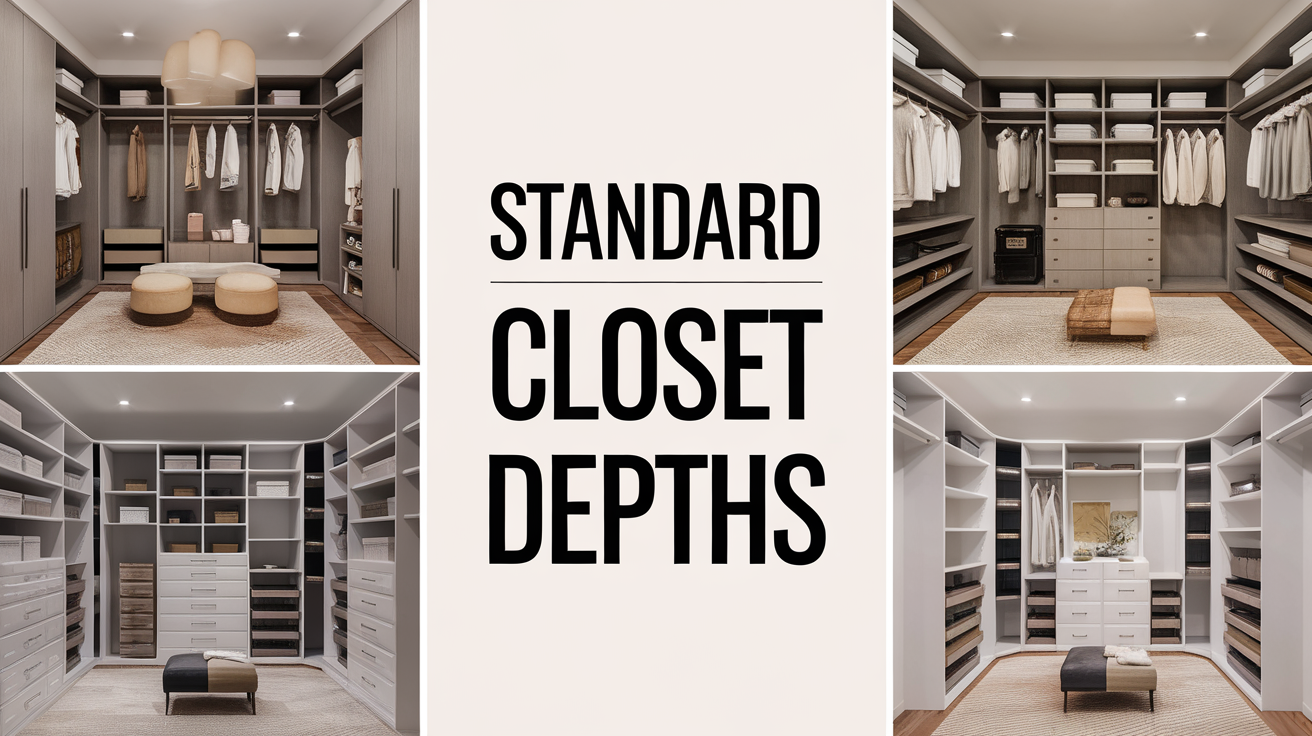When it comes to organizing your home, the depth of your closet can make a big difference in how much space you have to store your clothes and accessories. If you’re building a new closet or renovating an old one, understanding the right closet depth is key to making the most of your space.
A closet that’s too shallow might not fit all your items, while one that’s too deep can make it hard to reach everything. In this blog, I’ll break down the standard closet depth for different types of closets, like reach-in and walk-in closets, and help you figure out the best depth for your needs.
Whether you have a small apartment or a spacious home, we’ve got tips to help you create a functional and organized closet that works for you!
What Is the Standard Closet Depth?
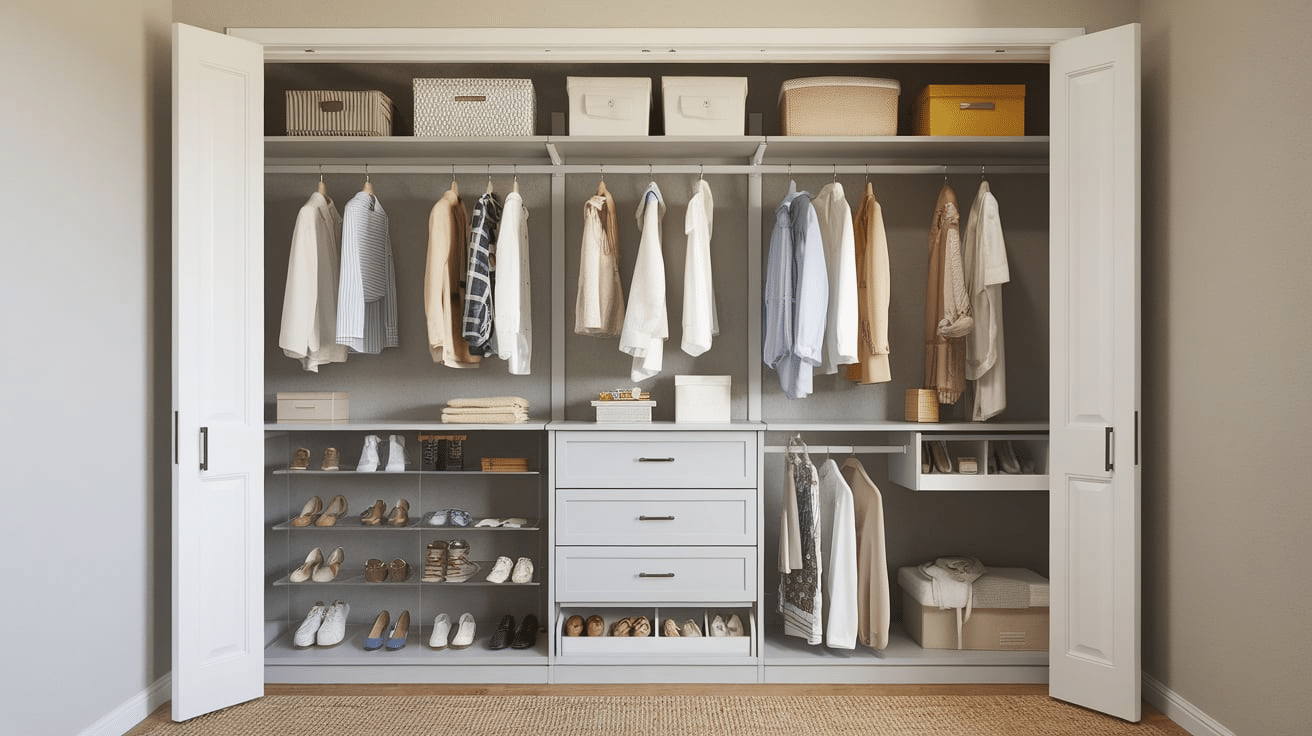
The standard closet depth is how far back the space inside your closet goes. For most reach-in closets, the depth is typically 24 inches. This is enough room for hanging clothes like shirts and jackets.
However, if you want to store longer items, like coats or dresses, you might need a bit more space—about 30 to 36 inches deep is ideal for these items.
The depth of walk-in closets usually starts at about 6 feet. This gives you plenty of room to move around and store clothes, shoes, and accessories. If you have more space, you can even make the closet deeper to fit more items comfortably.
The depth of your closet plays a big role in how much you can store, so it’s important to choose a size that fits your needs!
The Role of Closet Depth
Closet depth plays a significant role in the functionality and appeal of your home. A well-designed closet with the right depth can make a small room feel more organized and spacious.
For example, deeper closets allow for better storage and easier access to clothes, shoes, and accessories, which is a major selling point for potential buyers. On the other hand, shallow closets may limit storage, making rooms feel cramped and less functional.
When renovating or designing a home, considering the right closet depth not only makes everyday living more convenient but can also add value to your property. Homes with well-organized closets are often seen as more desirable, especially in competitive real estate markets, because they offer practical, space-saving solutions that buyers appreciate.
Standard Closet Depth for Different Types of Closets
The depth of your closet depends on the type of closet you have.
1. Reach-in Closets
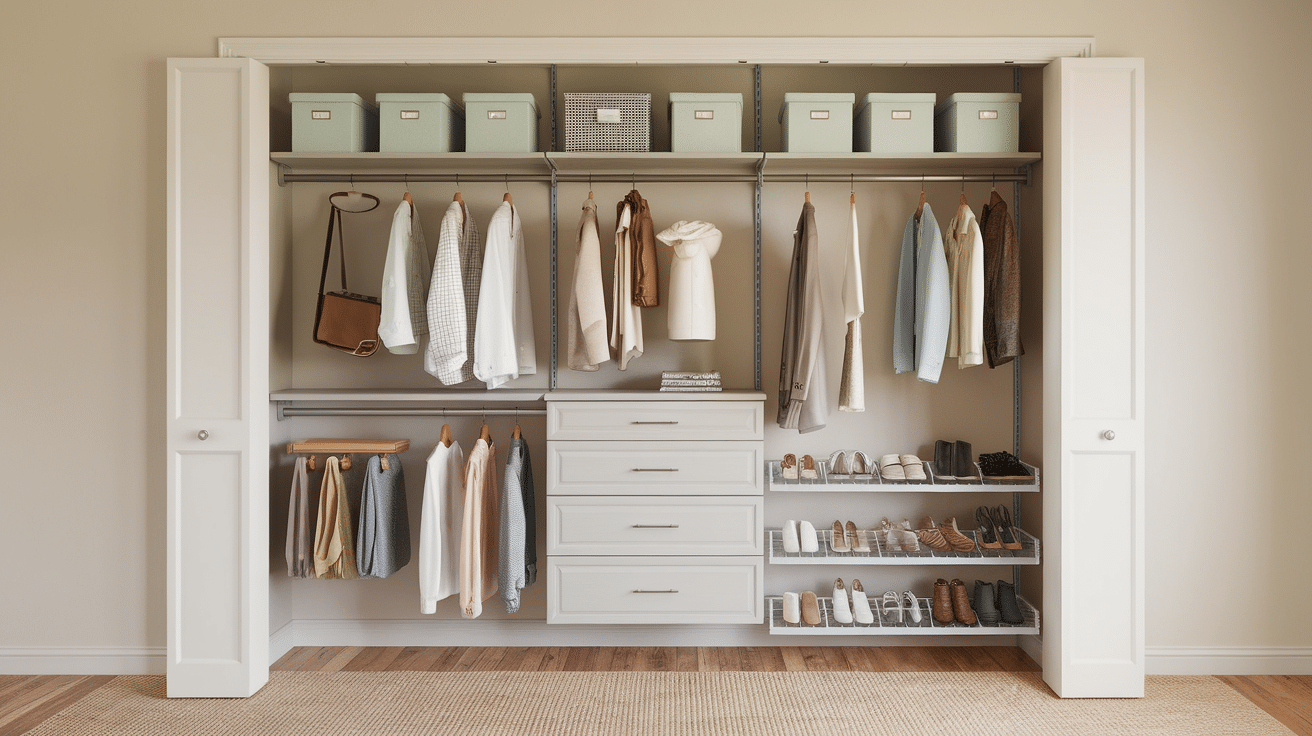
-
Standard Depth: 24 inches
-
Reach-in closets are the most common type and are typically used for smaller spaces. A depth of 24 inches is usually enough for hanging clothes like shirts, blouses, and pants. However, if you plan to store longer items like coats or dresses, you may need a bit more space, usually 30 to 36 inches.
2. Walk-in Closets
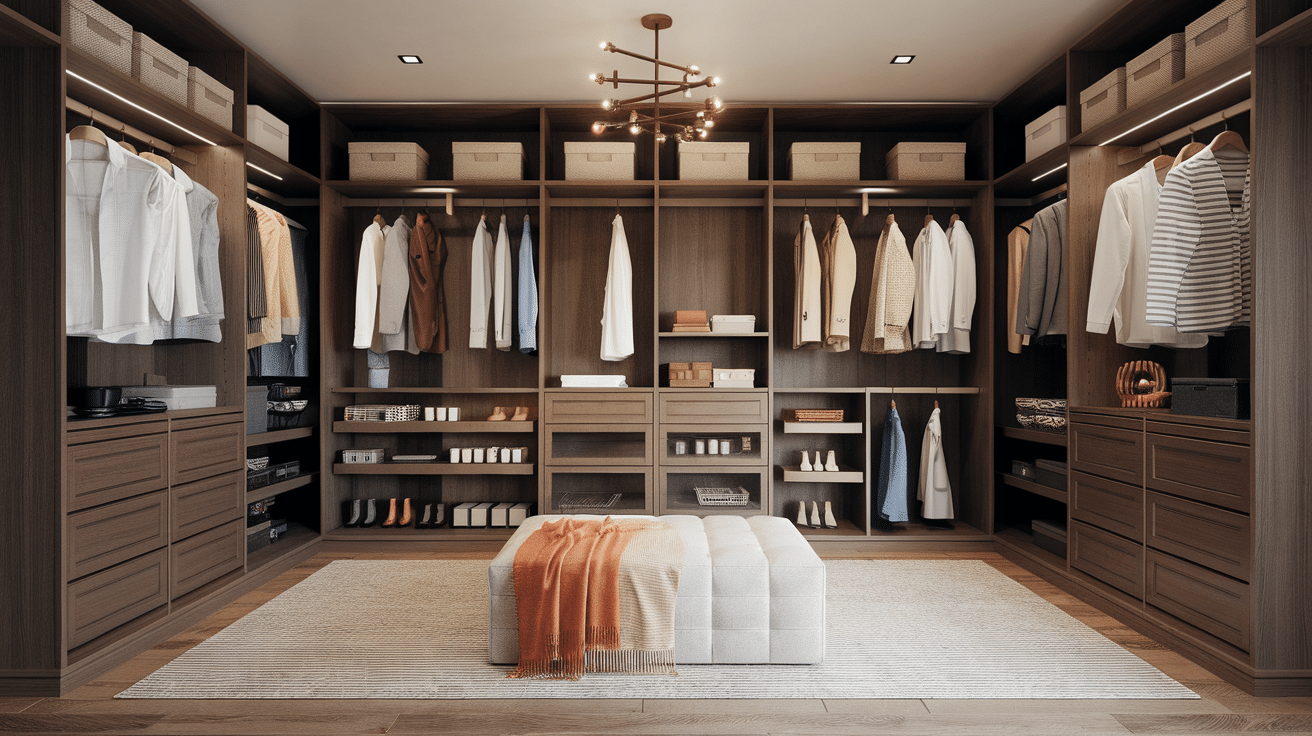
-
Standard Depth: 6 feet (72 inches)
-
Walk-in closets are larger and give you more room to move around. They usually start around 6 feet deep, but you can go deeper depending on your space and storage needs. Walk-in closets offer more flexibility for shelving, hanging items, and even adding storage accessories.
3. Linen Closets
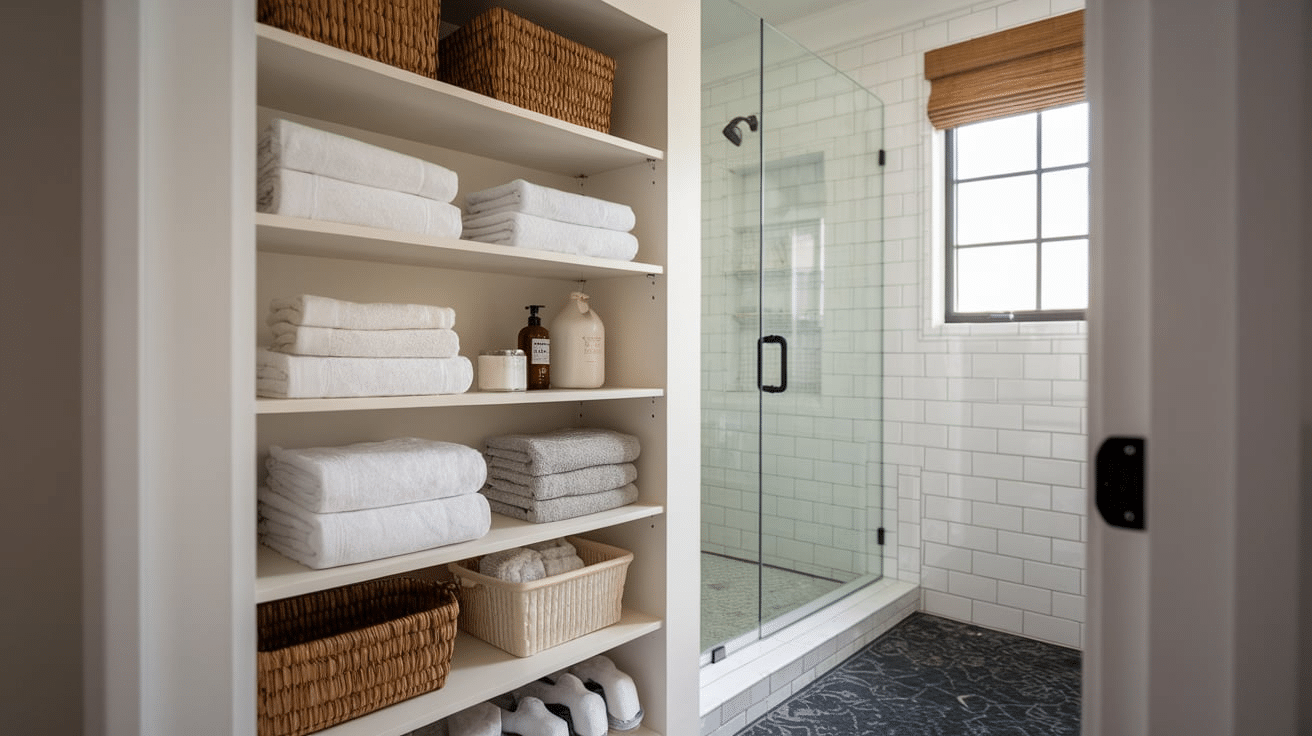
-
Standard Depth: 12 to 18 inches
-
Linen closets are usually smaller and shallower since they’re meant for storing towels, sheets, and other linen items. The standard depth is between 12 and 18 inches, which is enough for these smaller items.
4. Coat Closets
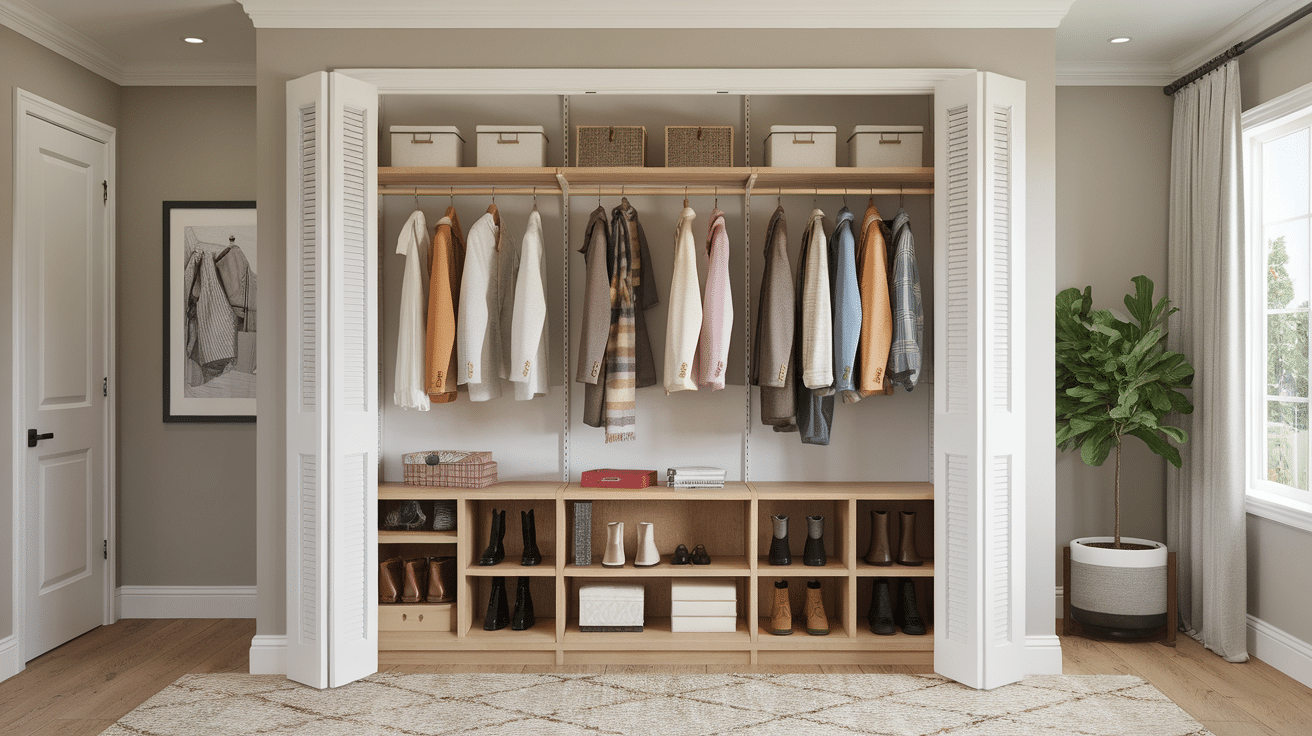
-
Standard Depth: 24 inches or more
-
Coat closets often need a little more depth to hang jackets and coats comfortably, especially in colder climates. A depth of 24 inches is standard, but 30 inches can give you extra room for bulkier coats and jackets.
Each type of closet serves a different purpose, and the depth is designed to meet your specific storage needs. Whether you have a small reach-in closet or a spacious walk-in closet, choosing the right depth helps keep your things organized and easy to access.
Best Closet Depth for Different Types of Clothes
The depth of your closet plays a big role in how well you can organize your clothes.
1. Short Clothes (Shirts, Blouses, Pants)
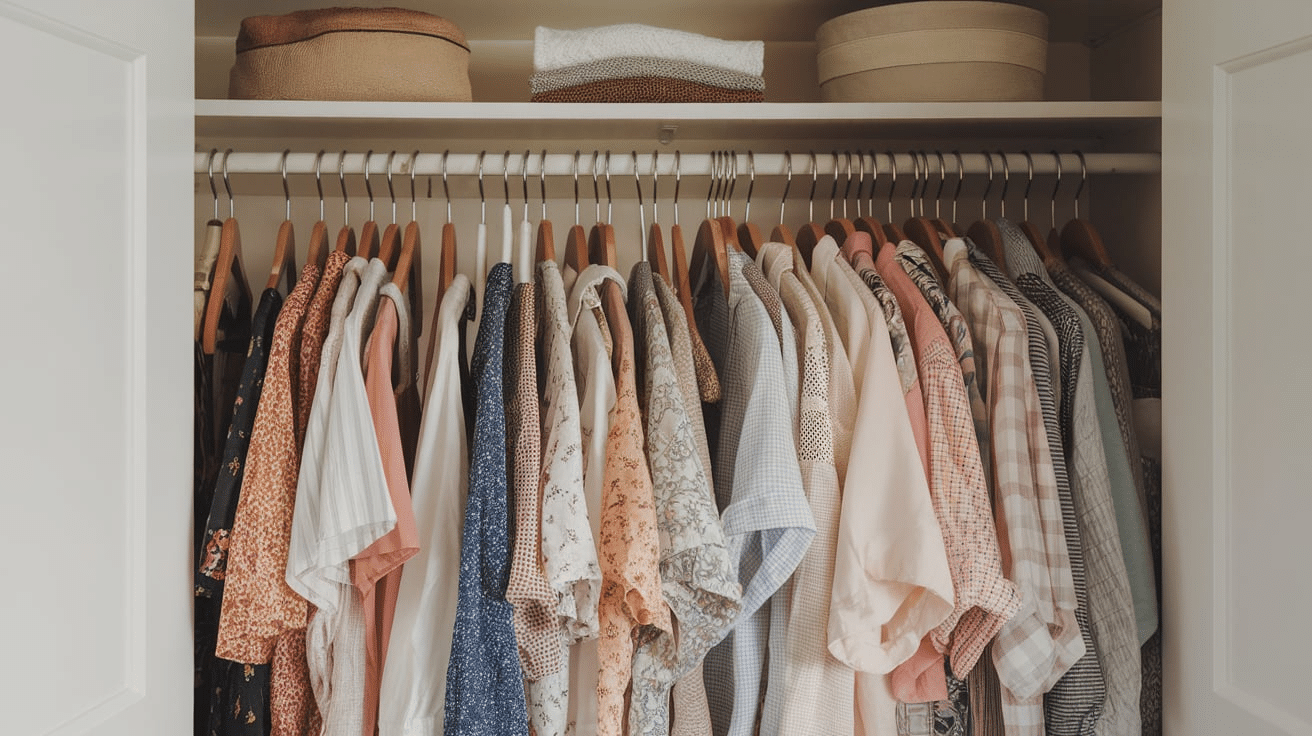
-
Best Depth: 24 inches
-
A closet depth of 24 inches is usually enough for regular items like shirts, blouses, and pants. This allows you to hang clothes neatly and have enough room to access them easily without wasting space.
2. Long Clothes (Coats, Dresses)
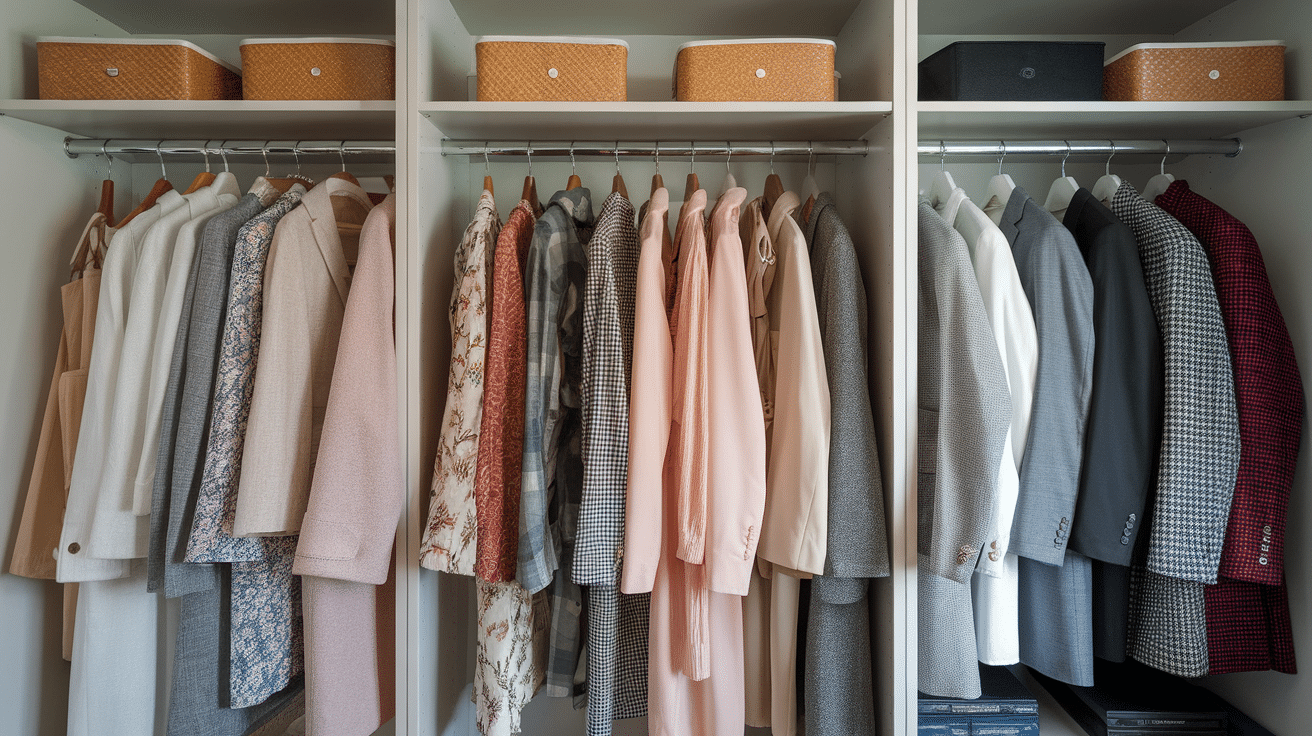
-
Best Depth: 30 to 36 inches
-
If you need to store longer items like coats, dresses, or suits, you’ll want a deeper closet. 30 to 36 inches gives enough room to prevent these items from getting squished or wrinkled. This depth is especially important for winter coats or formal dresses that need to hang freely.
3. Shoes and Accessories
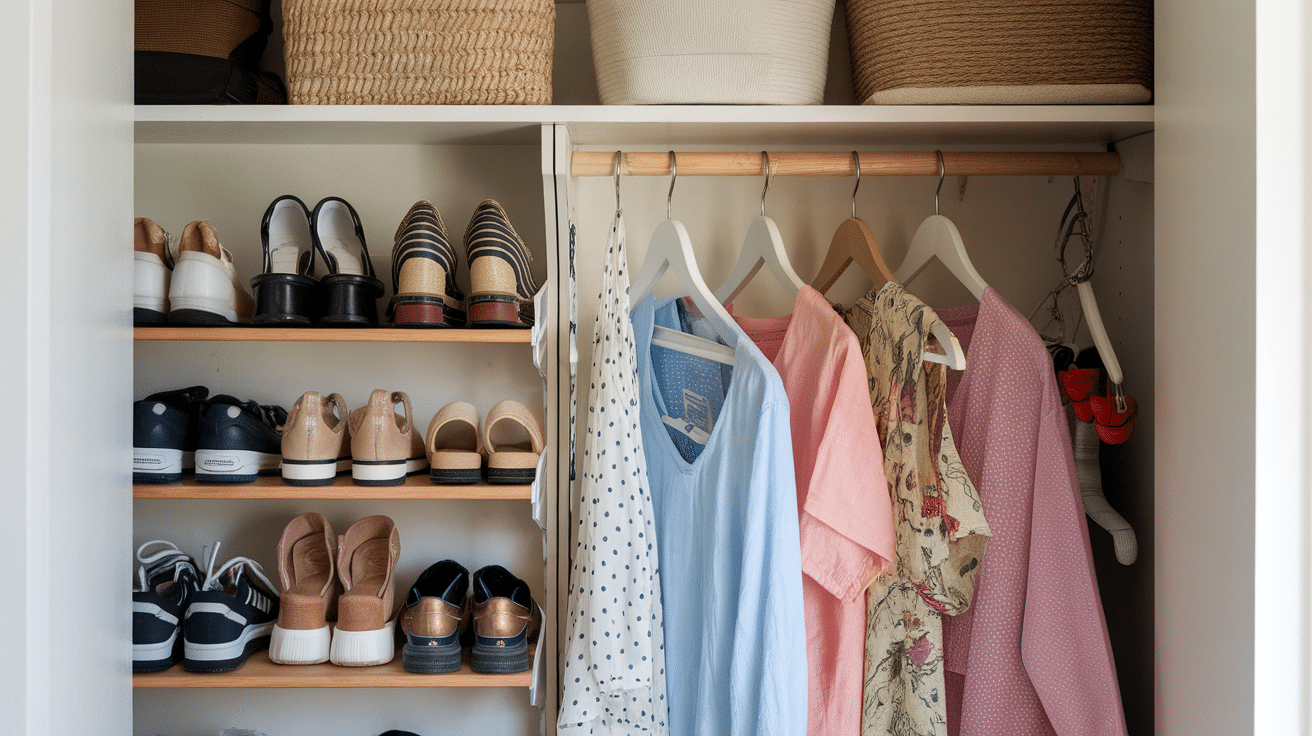
-
Best Depth: 12 to 18 inches
-
A shallower depth works best for shoes, scarves, belts, or other accessories. 12 to 18 inches allows you to store shoes neatly and access them easily without taking up too much closet space.
4. Bulky Items (Coats, Sweaters)
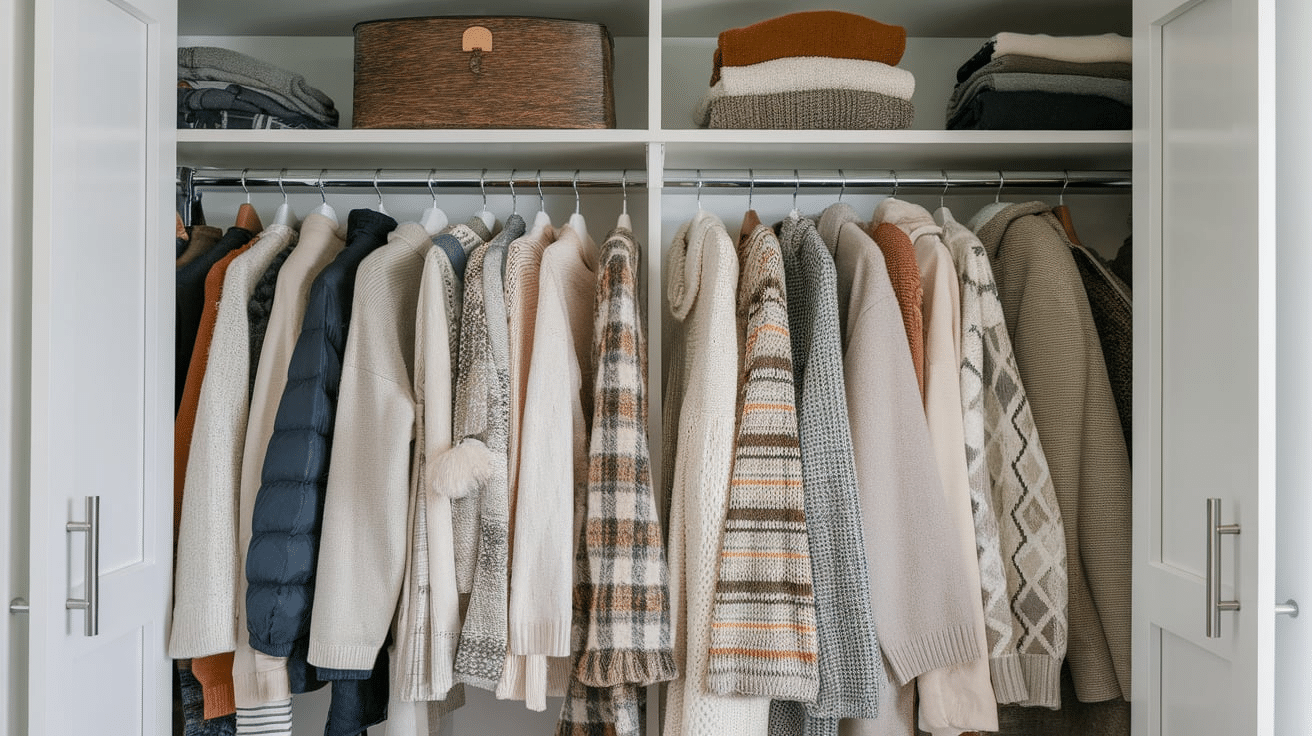
-
Best Depth: 30 to 36 inches
-
For bulkier items like sweaters or jackets that take up more room, you’ll need a little extra depth. A closet that’s at least 30 inches deep gives these items enough space without making the closet feel overcrowded.
5. Folded Clothes (T-Shirts, Jeans)
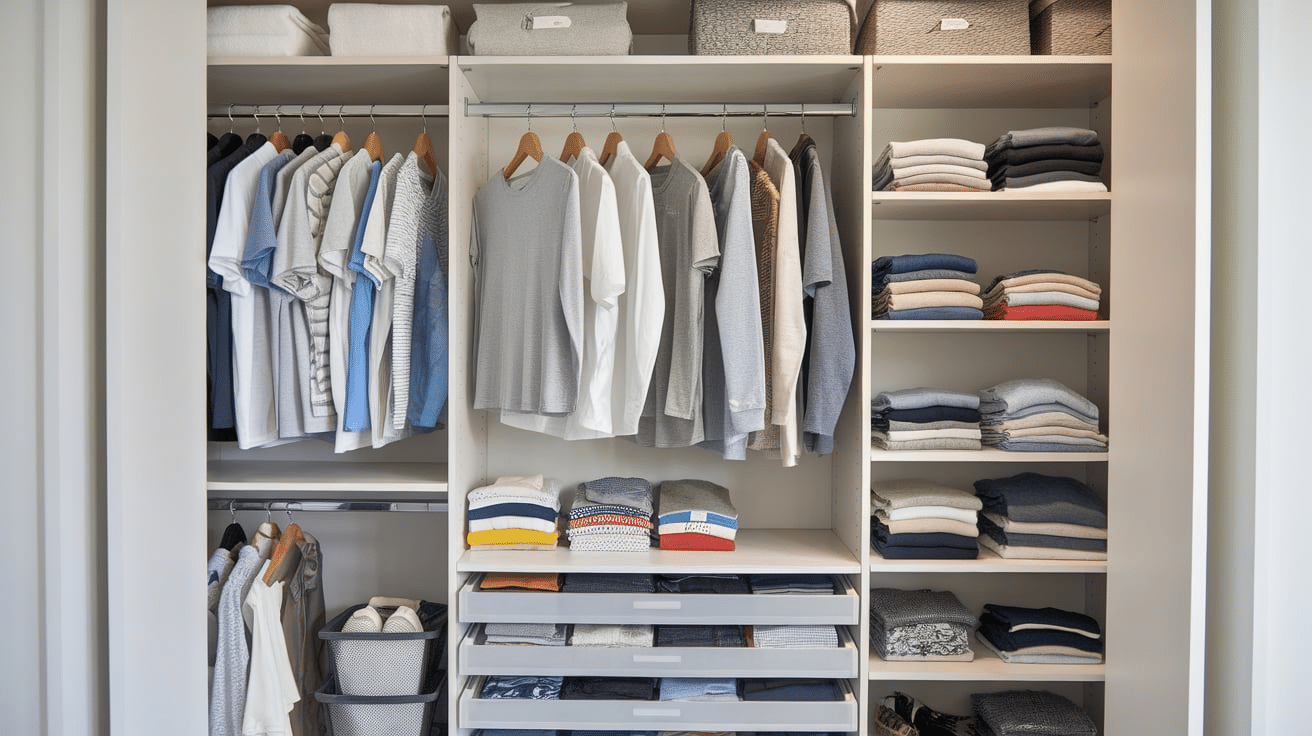
-
Best Depth: 24 inches
-
Folded items, such as T-shirts, jeans, and sweaters, don’t need much depth. 24 inches is perfect for storing them on shelves or in bins while keeping the closet organized and easy to access.
6. Seasonal or Off-Season Clothes
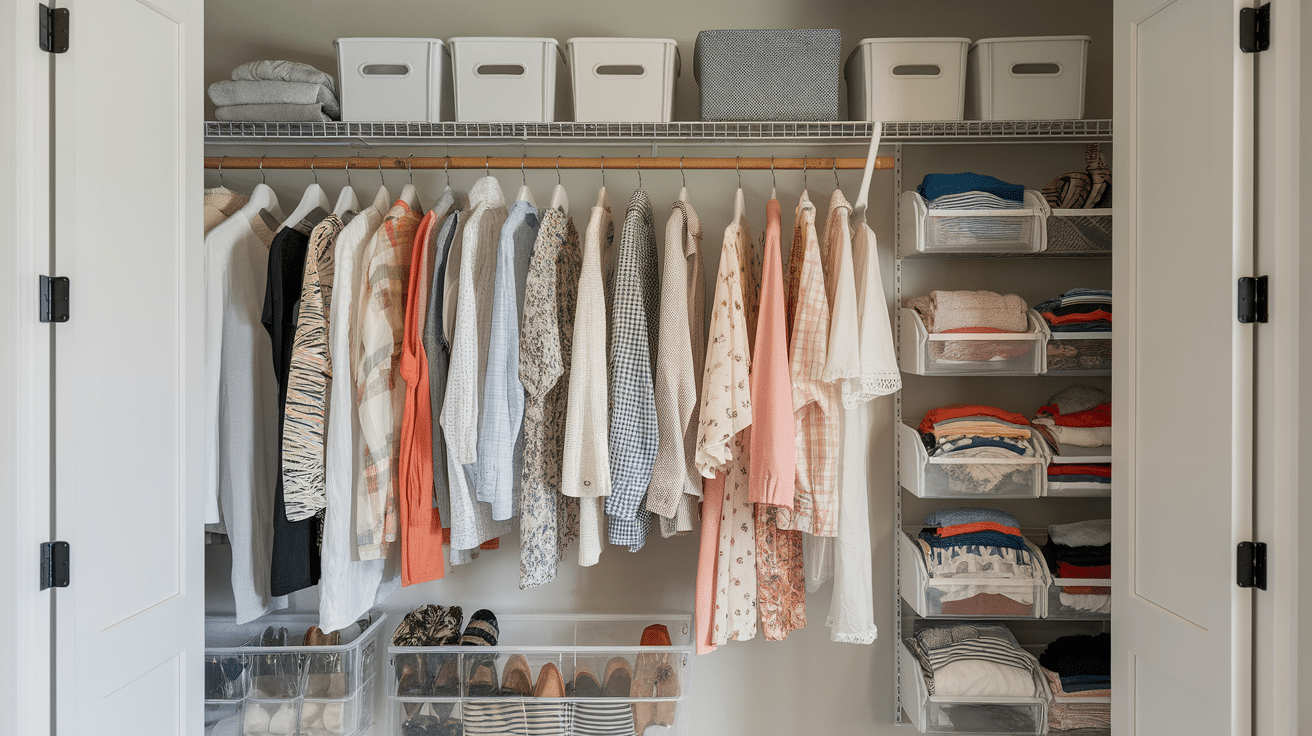
-
Best Depth: 24 to 30 inches
-
For clothes that you only wear in certain seasons, such as winter jackets or summer clothes, a 24 to 30-inch closet depth will give you enough room to store them in bins or hanging organizers. You can store these clothes in the back of your closet until you need them again.
By choosing the right depth for your clothes, you’ll keep everything organized and easy to access. Make sure to adjust the depth based on your closet’s size and the types of clothes you own to maximize space and functionality!
How to Maximize Closet Depth
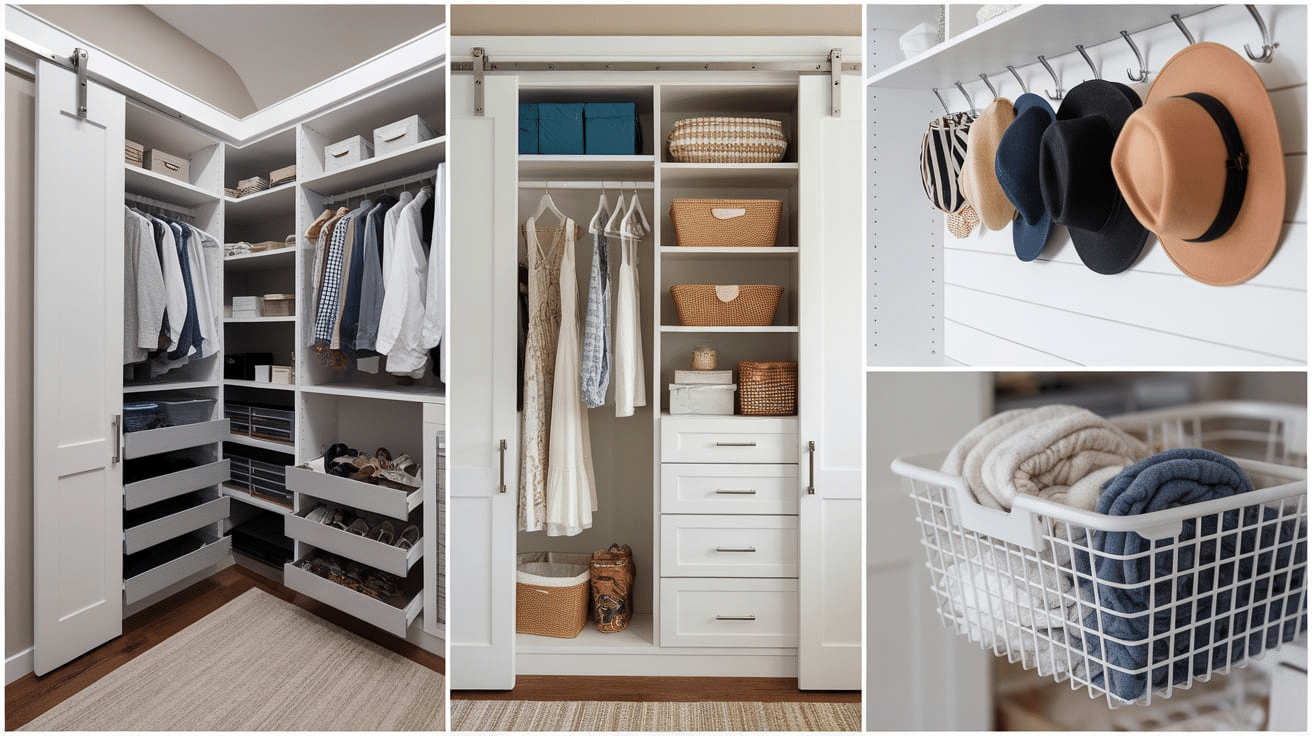
Maximizing the depth of your closet is all about making the most of the space you have.
1. Use Adjustable Shelving: Adjustable shelves allow you to move shelves up or down to fit different-sized items. This helps you use the full depth of the closet while keeping things organized and easy to access.
2. Add Pull-Out Racks or Drawers: Pull-out racks or drawers are perfect for making deep closets more accessible. They let you pull items out without having to reach too far into the back of the closet.
3. Install a Sliding or Bi-Fold Door: Sliding or bi-fold closet doors take up less space when opened compared to traditional swinging doors. This allows you to maximize the closet’s depth and makes it easier to reach everything inside.
4. Use Hooks or Hanging Organizers: Adding hooks on the inside of your closet door or using hanging organizers helps you use the upper or lower parts of the closet without losing valuable floor space.
5. Store Seasonal Items in the Back: To make room for everyday items, store things you don’t need often, like seasonal clothes, at the back of the closet. Use bins or boxes to keep them organized and easy to access when needed.
6. Use Deep Closet Storage Bins: Use large, sturdy bins or baskets that fit the full depth of your closet. Label them for easy identification and stack them to keep things organized and easy to find.
7. Make Use of Vertical Space: Don’t forget about the space above your hanging clothes! Add shelves or storage racks higher up in the closet to store items like hats, shoes, or extra bedding.
By using these strategies, you can make the most of your closet’s depth and create a more organized, functional space.
Closet Depth Considerations for Small Spaces
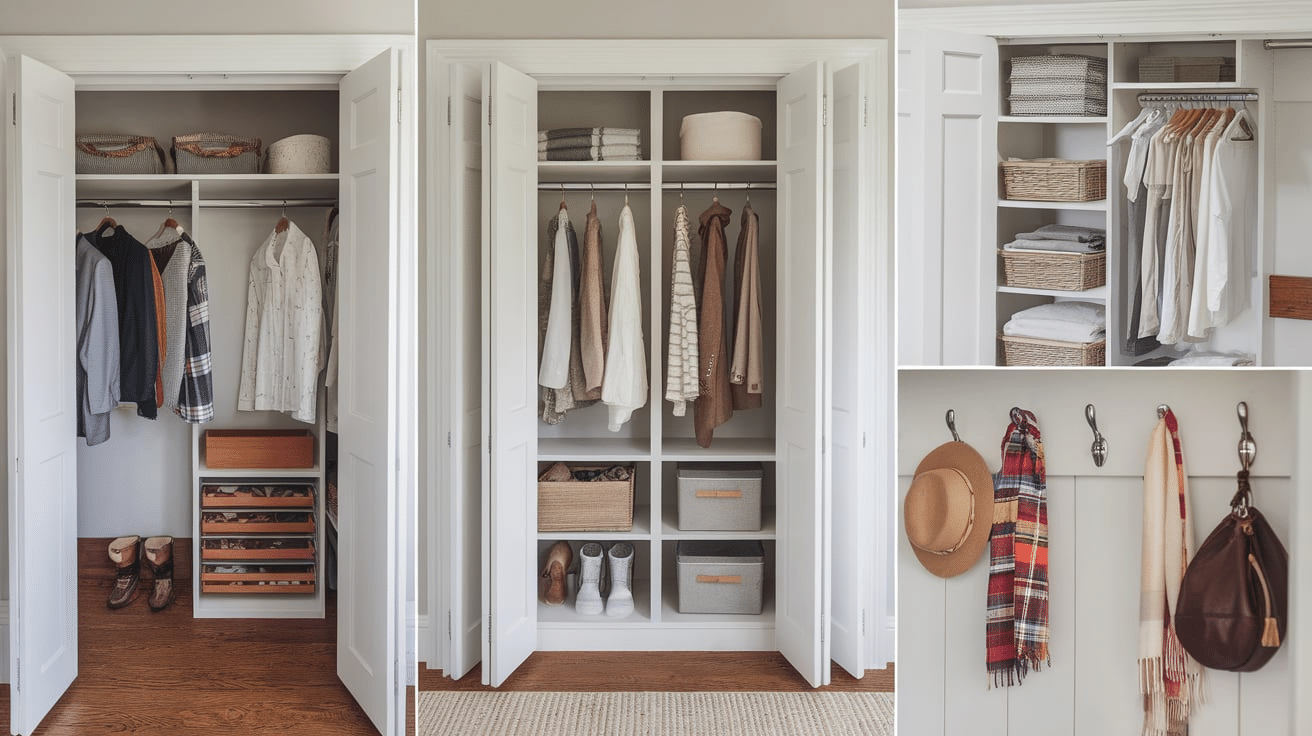
When working with a smaller bedroom or apartment, it’s important to make the most of every inch of space, including your closet. Here are some tips for choosing the right closet depth in small areas:
1. Go for Shallow Closets: In small spaces, you might not have room for a deep closet. Opt for a 24-inch depth to keep the closet functional while saving space. This depth is great for hanging clothes and using shelves for storage.
2. Use Sliding or Bi-Fold Doors: Instead of traditional swinging doors, use sliding or bi-fold doors. These take up less space when opened, allowing you to keep the closet depth smaller without sacrificing ease of access.
3. Double-Duty Storage: Maximize closet depth by using multi-functional furniture. For example, a closet organizer with pull-out racks, bins, or drawers can help you use a shallower closet space more efficiently.
4. Use Vertical Space: In small spaces, you don’t always have to focus on depth. Use the vertical space by installing higher shelves or a second hanging rod for shorter items. This way, you can store more without needing a deeper closet.
5. Consider Built-In Storage: These systems can help you organize your closet without needing deep storage, and they allow for adjustable shelves and hanging rods to maximize every inch.
6. Use Hooks and Pegboards: If closet depth is limited, consider installing hooks or pegboards on the inside of closet doors or on walls. These can hold accessories, bags, or hats and free up space inside the closet for other items.
By carefully planning the depth and layout of your closet, even small spaces can have plenty of room for storage. The key is to use every inch wisely and choose solutions that make the most of your available space!
Closet Depth and Accessibility
The depth of your closet plays a big role in how easy it is to access and organize your items. Whether you have a deep or shallow closet, there are ways to maximize accessibility and make the most of the space you have.
For Deeper Closets
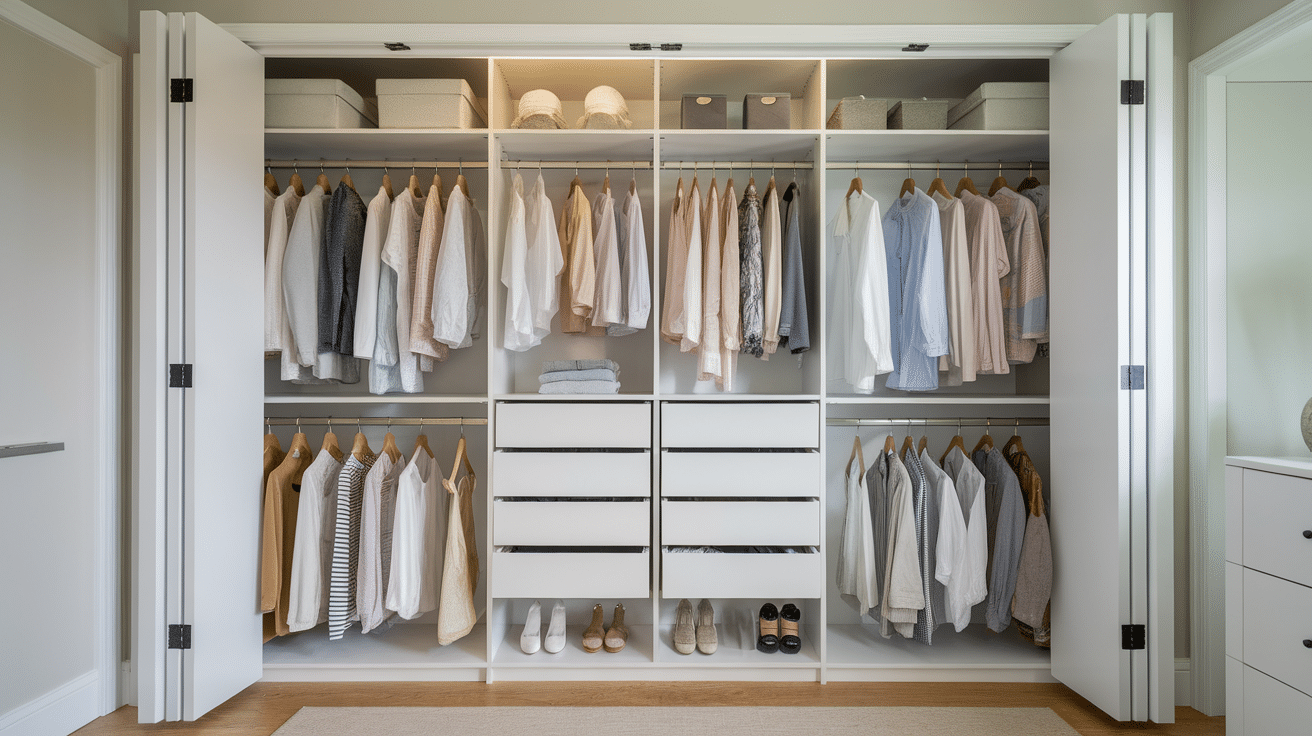
-
Use Pull-Out Storage: For deeper closets, pull-out racks or drawers are a great way to make sure you can easily reach items at the back. Consider installing pull-out shelves or hanging organizers that can be pulled forward, making it easier to access clothes without digging around.
-
Add Sliding or Bi-Fold Doors: Instead of traditional swinging doors, use sliding or bi-fold doors to save space. These types of doors don’t take up extra room when opened, allowing for better access to the entire depth of your closet.
-
Organize in Zones: Divide your closet into zones based on frequency of use. Store the items you access most often at the front and the seasonal or rarely used items at the back. This way, everything stays organized, and you don’t have to dig to find what you need.
For Shallow Closets
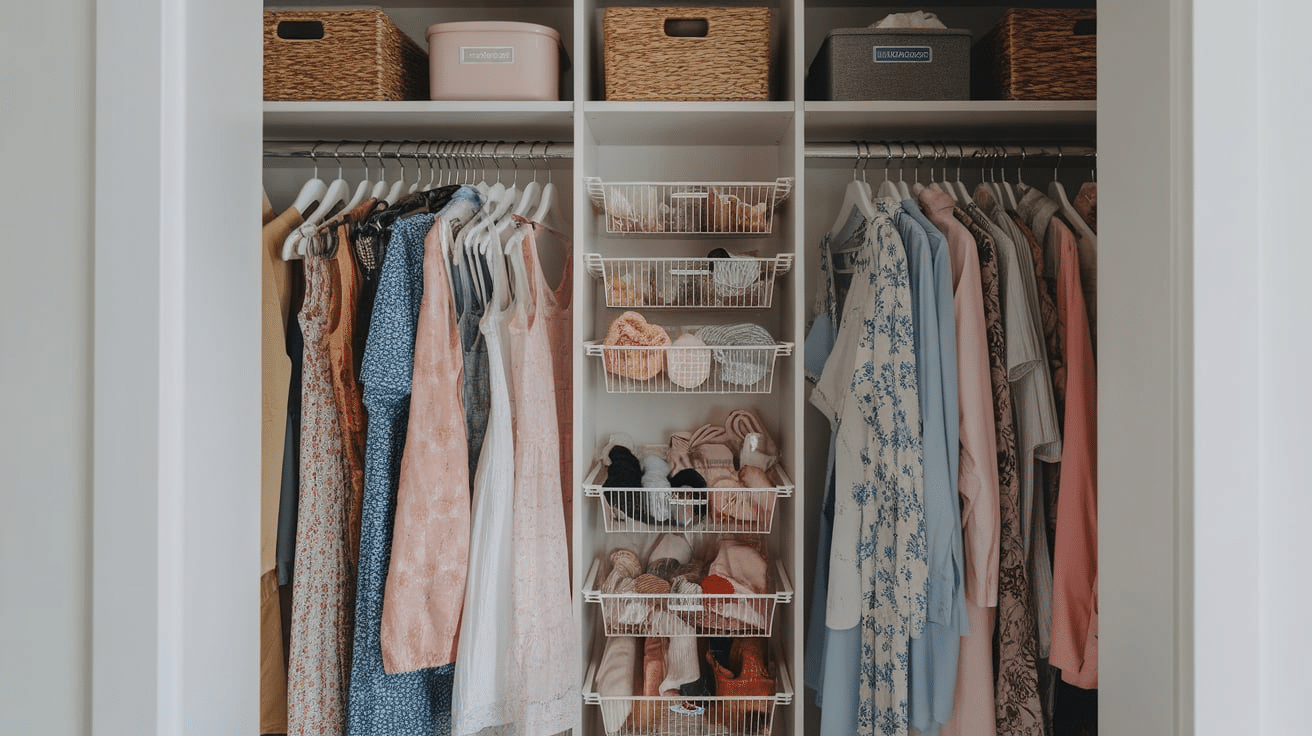
-
Maximize Vertical Space: In a shallow closet, you may not have a lot of room to hang long clothes. To make the most of the space, use the height of the closet by adding shelves or a second hanging rod for shorter items like shirts and pants.
-
Use Hanging Organizers: Hanging organizers, like baskets or shoe racks, can be used on the back of the door or along the walls of the closet. These will help store smaller items like shoes, hats, or scarves without taking up too much space.
-
Invest in Slim Storage Solutions: Look for slim, space-saving storage solutions like slim-profile hangers and compact shelving units. These options maximize the limited space and help keep the closet tidy and functional.
General Tips for Any Closet
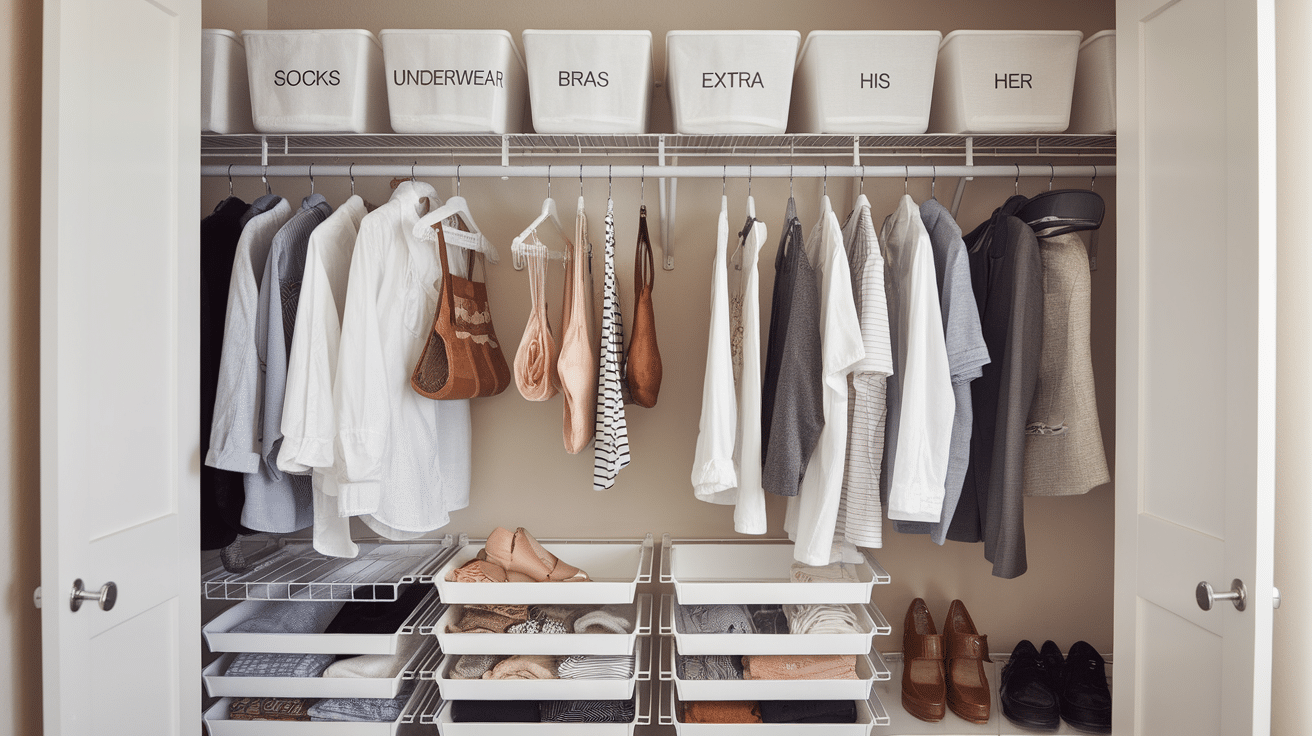
-
Declutter Regularly: No matter the closet depth, staying organized is key. Declutter your closet regularly by getting rid of things you don’t use or need. This will free up space and make it easier to access the things that matter.
-
Label Bins and Baskets: For closets with shelves or bins, labeling helps you stay organized. You’ll know exactly where everything is, even if the items are tucked away in deeper areas.
By considering your closet’s depth and adding smart storage solutions, you can make even a small or deep closet more accessible and efficient. With a little planning, you can maximize the space and keep your items organized and easy to reach!
Conclusion
The depth of your closet plays a crucial role in how functional and accessible your storage space will be. Whether you have a deep walk-in closet or a shallow reach-in closet, there are plenty of ways to make the most of the space you have.
By using smart storage solutions like pull-out racks, adjustable shelves and maximizing vertical space, you can keep your closet organized and easy to access. Consider your needs, available space, and the types of items you’re storing when deciding on closet depth.
With a little planning, you can create a closet that’s both functional and efficient, no matter how much room you’re working with. Happy organizing!

